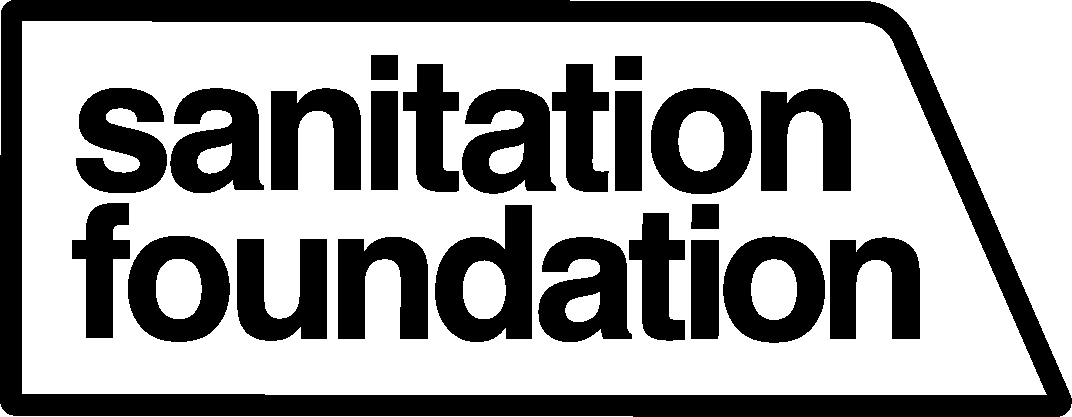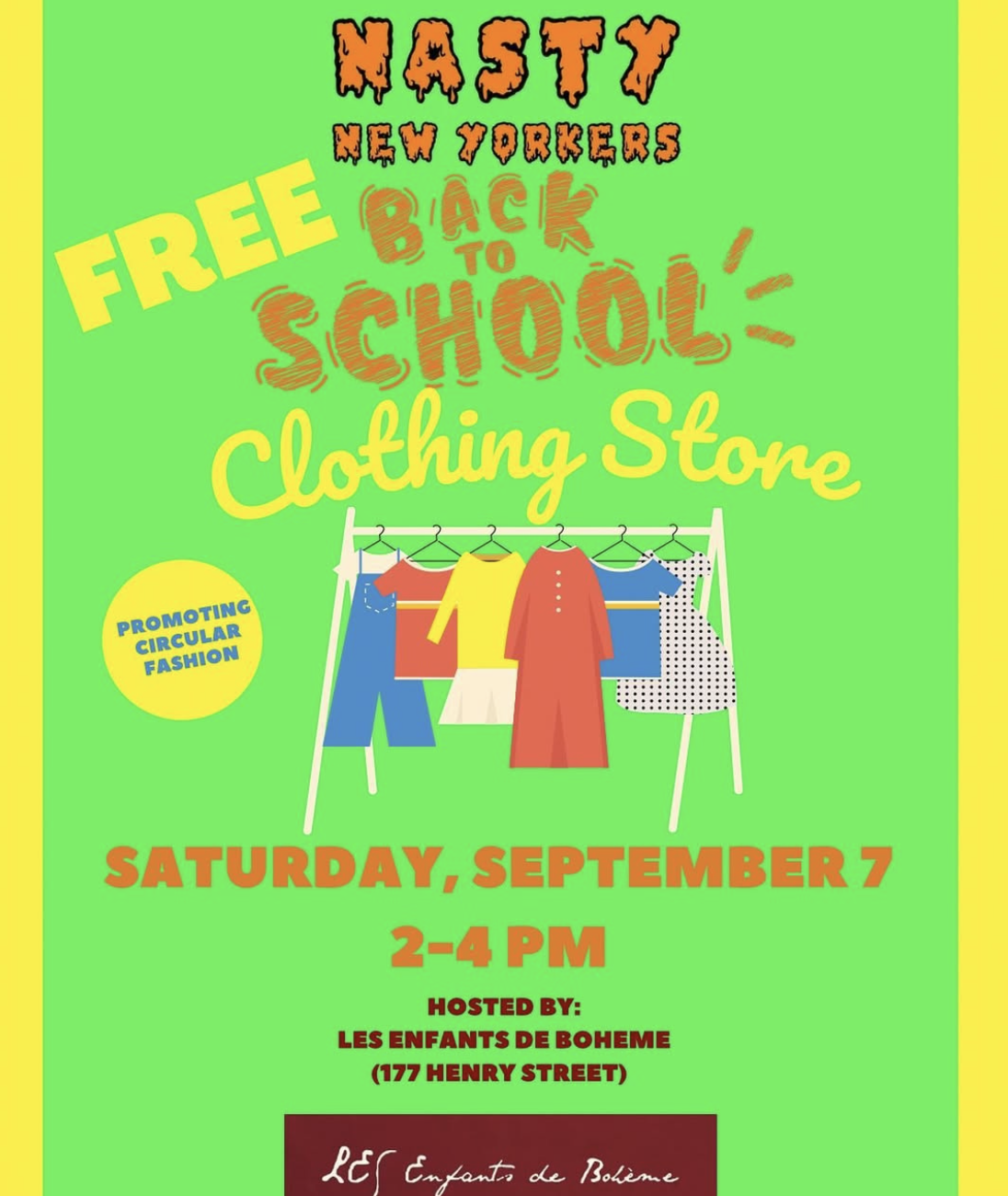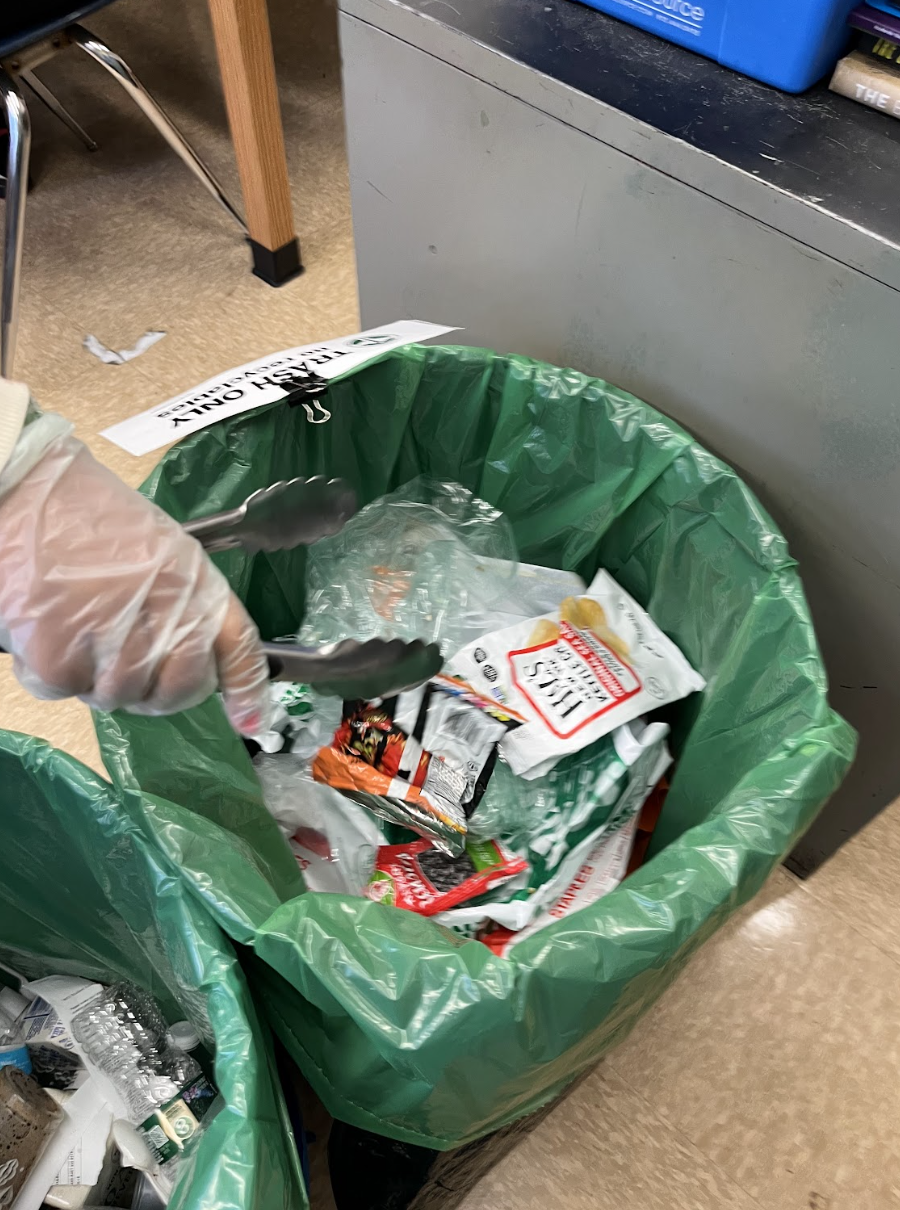Waste Pioneer: Soleil Sabalja, waste educator behind Nasty New Yorkers
Soleil Sabalja is bringing local communities and NYC students—and the world—together through cleanups and waste awareness
With our citywide NYC Big Spring Clean around the corner, we are thrilled to spotlight Soleil Sabalja as this month’s Waste Pioneer, for her tireless individual contributions to NYC’s waste management education—both as the founder of the community cleanup group Nasty New Yorkers and as a Special Education Teacher with the NYC Department of Education. We caught up with this go-getting changemaker while she was with her students down at Coney Island Creek, where they were planting beach grass to combat erosion and help protect the neighborhood from future storms. With everything Soleil is involved in, we could only skim the surface—and presenting just one part of her story proved impossible. So check out the full interview below!
Happy cleanup and clothing swap groups with Nasty New Yorkers.
(Pink polka dot bag photo credit: @thetrashproject)
What are you most proud of regarding the impact of starting Nasty New Yorkers?
I'll start with some little moments of things that I'm proud of. They may seem quite small, but these small wins for the environment are big wins. Nasty New Yorkers started as just a way to educate others on how they can get involved and get started in/on small climate actions. Because these small climate actions, we always say, are like little gateway actions toward caring about the environment and true environmentalism. So when I get messages from strangers/people on Instagram or from friends saying, “Oh, I went to the beach and I picked up the trash that I saw!” and they're proud of themselves, excited to share moments like that—those, for me, are huge wins. People are excited to tell me about these little actions that they've done to do better in and for the environment. That, for me, is huge and very, very exciting.
“Small wins for the environment are big wins.”
How did you start Nasty New Yorkers?
Nasty New Yorkers got its start in 2020. It was around the time of a lot of the Black Lives Matter protests, and there were a lot of organizations starting community cleanups. I realized it was really challenging to participate in the community cleanups—everybody was posting about it on social media, but you had to follow each group to know when they were doing their cleanups. There was no “one stop shop” that you could go to that would [list all the cleanups in order of when and where] so that people could say, “Oh, cool. I can go and help out with this group next week…” So I decided to create that. It was inspired by an Instagram account called Justice for George NYC. They were posting about all protests on their one account—in Queens, in Manhattan, they would add it all, and it would all be listed on their account.
That’s what inspired me to do the same thing, but for community cleanups. I started reaching out to community groups and going to their cleanups and helping out with them, then collaborating with different groups and hosting some of my own cleanups in the Lower East Side.
How has Nasty New Yorkers expanded to free stores?
From the cleanups, we started hosting free stores. Last year, we hosted eight free stores, and we recirculated over 12,000 pounds of clothing and shoes in the Lower East Side community. We partnered with the restaurant Les Enfants de Bohème, which had one of the Open Streets permits; with them, we were able to get a DJ and have the whole block closed down. We would have hundreds of people in the community coming and getting free clothes and shoes. We had upcycling stations—we taught people to tie dye, we even had a mending group, we had somebody teaching mending. We want to make sure that everybody understands that just because your shirt is missing a button doesn't mean you have to throw it away. Just because your jeans have a hole in them, you don't have to throw them away. We are trying to reduce the amount of clothing and textiles that are being sent to landfills. So we were just trying to keep everything in circulation.
How do you incorporate waste education into your teaching roles?
I'm finishing my second master's program right now at NYU in Environmental Conservation Education. One of the things I did through that program is create a course called Climate Justice, essentially a combination of my special education background with the Environmental Conservation background. I've been teaching the course to 12th graders; it’s a science elective for students who are opting out of AP science classes. For those students who want a different science option, this course is created so that they can study different climate problems and create climate action and climate solutions for those problems.
One of the things that we study in our class is waste. We look at local and global waste streams. We compare the differences, and then we look at local waste problems. Specifically, one of the things we studied was how much waste we have in our school cafeteria, and what we could do to reduce the amount of food waste. Students had to come up with their own projects. On project was: they noticed that there was a massive amount of food waste, but it was good recoverable food that was getting thrown away. So the students created a proposal for our principal to buy a community fridge. They presented to the principal and to the parent association, and they received funding. They picked the fridge that they wanted, set it up, painted a mural in the cafeteria around the fridge, and since then, the community fridge has been able to save over 2000 pieces of food items instead of the food getting sent to landfill. They’re also addressing this issue of food justice, because our school is in an environmental justice zone. A lot of students live in public housing that's in a bit of a food desert. There were a lot of cool things that the students were able to do with this class.
In addition to that, I am also one of the school's Green Team leaders. The trip that we're on today [to Coney Island Creek] is specifically a Green Team trip. The students are super excited about it, because it's not a class trip, it's a club trip—so these kids are especially so pumped to be here. It's really cool. It's a really cool thing to get to see the changemakers of our next generation getting excited about these things. We've had students write college essays on some of the activities and projects that we've done.
Last Fall, Soleil and the students of East Side Community High School held a cleanup in partnership with the Sanitation Foundation, thanks in part to a litter cleanup mini-grant funded by Carlina Rivera's office (CD 2)
How else do you incorporate global waste awareness into your work with students and Nasty New Yorkers community groups?
I traveled on my own to do some work in Kenya; I actually have been working on creating a foundation called The Jua Foundation, and we're creating a scholarship fund to help sponsor children waste pickers in the Dandora Dump Site in Nairobi. It's the largest landfill in East Africa, and a lot of children are working as waste pickers because they can't afford to they can't afford to go to school. When I saw this, it was heartbreaking. I went to the landfill to learn about the waste system so I could teach my students about it in my class. But then it became something so much more—this Foundation. We were studying about this in my class and doing a Zoom call with a former waste picker, telling us about what life is like and what it's like to be a waste picker, and the students got to ask questions. The students were so inspired [to help]. The next day—I had one student, overnight, she drew all these bookmarks (she’s an amazing artist) and she wanted to sell the bookmarks to raise money to help get some of these children in school. She raised over $1,000 and she was able to get eight children sponsored in school.
The Jua Scholarship aims to help provide financial support for educational fees to children currently working as waste pickers in the Dandora Landfill in Nairobi, Kenya.
“It's really cool to be able to combine my personal passion projects that I do outside of school with what I'm doing with my students in school, because the work that I'm doing outside is inspiring to the kids.”
I didn't realize it until this year, when I decided, “You know what, I think the things that I'm doing in life are actually pretty cool, and I think the students would be interested in it.” I started sharing, and they've done some really cool stuff with the knowledge.
Tell us about the student experiences with the Sanitation Foundation cleanups! And how cleanups impact their waste awareness and their excitement to keep the city clean
One of the biggest things about having a connection with the Sanitation Foundation that has been so instrumental—and we're so thankful—is getting the funding to have the supplies. We now have our own pickers, we have garbage bags, we have gloves, we have scales.*
Now we took it one step further, and we collaborated with the 5 Gyres Institute. We didn't just do a cleanup—we were able to do a TrashBlitz. So the students had to work together to look at each brand of every item that they found and log what material it was. Once they had that information, we sent it to 5 Gyres via their TrashBlitz app. Now, 5 Gyres is going to be using our students' data from the cleanup that we did with the Sanitation Foundations supplies! The data will be used to drive policy change around plastic consumption and plastic waste. 5 Gyres does a lot of work on policy, collecting data specifically on plastic waste, and they're going to be able to now give a shout out to our school in their next report, all because we were able to do a Sanitation Foundation sponsored cleanup and log all the information. So that was really cool.
*[Even supplies that seem small like reusable nametag holders, provided by Sanitation Foundation, are helpful:] we use them to make sure students each have a clear, official role. With the TrashBlitz collaboration, the concept of roles has been vital. We have a waste picker, a waste manager (holding two trash bags—one for trash and one for MGPC recycling) and the data collector. The data collector has a clipboard (also donated by Sanitation Foundation) for the TrashBlitz data table and a 5 Gyres plastic identification chart. Teams of 3/4 go out to not only collect trash, but collect data that is then used to help drive policy at a higher level to reduce plastic. I have noticed that students take the cleanup more seriously when they have a specific role.
“It was a huge community effort of different organizations, but our school and 5 Gyres couldn’t help us when it came to getting trash pickers and other materials like gloves and and garbage bags. So if it wasn't for Sanitation Foundation, we wouldn't have any been able to organize something like this.”
Scenes from the 5 Gyres Waste Audit, made possible by the Sanitation Foundation
What’s your personal take on how waste awareness, cleaning up, and coming together to help keep NYC clean fosters neighborhood community, stewardship, and civic responsibility?
Community cleanups are a great way to get started with activism and community involvement, because cleanups really start as a gateway. It's opening up your world to endless possibilities of how we can change small behaviors in our life to improve not only our community but the entire environment. So not only teaching students this, but teaching everyone in our community to be aware this, and especially with trash cleanups. Once people start realizing how much trash they see, they can't unsee it. I have had so many people do cleanups and they say, “Oh my God, I've walked down the street a million times and never really noticed how much trash until you're actually the one picking it up.” They realize it's filthy. That's been huge. And once people do it, once they do it all the time, they'll do it on their own, they'll notice it, they'll share with other people. One person doing a community cleanup, they might say, “I picked up 10 plastic bottles. I can't believe how many plastics I've picked up.” Which might then encourage them to stop using plastic bottles, or reduce the amount of plastic bottles they're using. They might then tell others about it, and it's a chain reaction.
“There are lots of different actions to be sprung from one person participating in one action in their community. It's endless possibilities of growth from there.”
Tell us more about your work with the National Geographic Society and Lindblad Expeditions as a 2024 Grosvenor Teacher Fellow—what does this entail and how are you incorporating the work of Nasty New Yorkers and cleanup education into this exciting chapter?
I was chosen to go to Antarctica, and part of the fellowship entails using what we learn in the field in our classroom. For the Climate Justice class that I taught, we created a project where students were role-playing different scientists that do work in Antarctica: they had to do research on penguinologists, on meteorologists, on oceanographers, on marine biologists—different scientists that would be doing work there. And then, in the point of view of that person, they wrote letters to the State Department's Office of Ocean and Polar Affairs, urging the Department to remain in support of the Antarctic Treaty, so that Antarctica will remain a place of peace and science and not become a place for drilling and stealing of resources. So that was a really cool project that was inspired by one of the naturalists that I learned from while on the trip in Antarctica.
Come meet Soleil and other amazing waste-reduction champions at the Big Spring Clean! You can also visit the Nasty New Yorkers to find information on cleanups going on around NYC. Or visit the Sanitation Foundation’s Volunteer Hub to discover additional citywide volunteer cleanup opportunities. Check out our upcoming events page for more.
(Interview edited for clarity.)


























